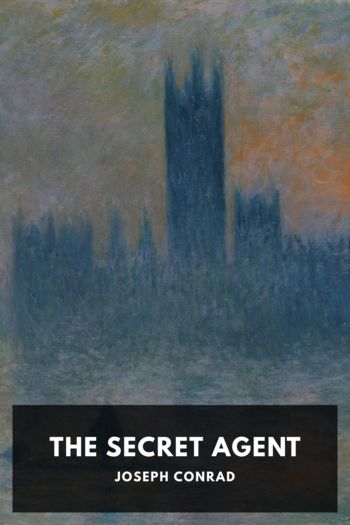Hidden History: Lost Civilizations, Secret Knowledge, and Ancient Mysteries Brian Haughton (an ebook reader .txt) 📖

- Author: Brian Haughton
Book online «Hidden History: Lost Civilizations, Secret Knowledge, and Ancient Mysteries Brian Haughton (an ebook reader .txt) 📖». Author Brian Haughton
More recently, Apollonius of Tyana became an important influence in the occult revival of the 19th century. French occultist Eliphas Levi (18101875) even tried to conjure up the spirit of the great sage. Apparently when visiting London in 1854, Levi was asked by a mysterious lady in black to attempt to raise Apollonius's phantom, as there were some vital questions she wished to learn the answers to. Levi's preparations for the ritual included two weeks without eating meat and a week of fasting and meditation on the subject of Apollonius. The ritual was to take part in a chamber in the lady's house, with four concave mirrors on the walls, and a marble table on which were placed two metal dishes. After the necessary preparations, Levi, wearing a white robe and carrying a sword, lit fires in the dishes and began to invoke the sage. His incantations continued for hours, until the room began to shake beneath him and a vague shape of a man appeared in the smoke, only to quickly dissolve again. He repeated his incantations, and this time the shape turned into an apparition of a beardless man wrapped from head to foot in a gray shroud. As the shape advanced toward him, Levi turned cold and was unable to speak. The phantom brushed against his ritual sword, and Levi's arm suddenly went numb and he lost consciousness. In his book Transcendental Magic (1865), where he describes this incident in detail, Levi relates that his arm was painful for days afterward. He does not claim that he actually invoked the shade of
Apollonius, but he does mention that he received answers to the lady's questions telepathically, though he never discloses the questions.
Engraving ofApollonius from the book Antiquity Unveiled by Jonathan M. Roberts (1892).
Apollonius of Tyana continues to fascinate people in the 21st century. Current theories, which are really restatements of old ideas, include that he was actually the apostle Paul, or even Jesus of Nazareth, and that the image on the Turin Shroud is actually that of Apollonius. But Apollonius of Tyana should not be remembered merely as a magician or a miracleworker. He had a single-minded devotedness to a high and pure ideal, and it was this sense of purpose that gave him the courage to sit face-to-face with the most powerful and dangerous leaders in the world, and not waver an inch from his true beliefs.
King ArIhur and the Knights of the Round Table
A bronze King Arthur in plate armor, early 16th century, from The Book of Knowledge, the Grolier Society (1911).
There is a grave for March, a grave for Gwythur, a grave for Gwgawn Red-sword; the world's wonder a grave for Arthur.
Englynion y Beddau (The Stanzas of the Graves)
The national hero of Britain, a figure who seemingly straddles both myth and history with equal ease, King Arthur is the archetypal warrior king. For many people, he is the one point of light in a bleak British Dark Age. The very mention of the name King Arthur conjures up images of knightly duels, beautiful damsels, mysterious wizards, and treacherous deeds performed in tumbling castles. But what lies behind these essentially medieval romantic ideas? There is certainly a literary Arthur; there is, in fact, a whole cycle of stories known as the Arthurian Romance. A mythological Arthur-like character can also be traced in Celtic literature, but what of the historical Arthur? Is there any evidence that the stories of a great British king who led his countrymen in ferocious battles against the invading Saxons might have a basis in fact?
Briefly, the outline of the main Arthur myth is this: Arthur was the first born son of King Uther Pendragon, born in Britain during extremely troubled and chaotic times. The wise magician Merlin advised that the child Arthur should be brought up in a secret place and that no one should know his true identity. With the death of Uther Pendragon, Britain was without a king. Merlin had magically set a sword in a stone, on the sword were words written in gold, saying that whoever managed to pull the sword from the stone would be the next rightful king of Britain. Many attempted the feat, but none succeeded, until Arthur withdrew the sword and Merlin had him crowned. After breaking this sword in a fight with King Pellinore, Merlin took Arthur to a lake
and a mysterious hand rose out of the waters and gave him the famed Excalibur. With this sword (given to him by the Lady of the Lake), Arthur was invincible in battle.
After marrying Guinevere, whose father (in some versions of the tale) gave him the Round Table, Arthur gathered an impressive group of Knights around him, and he established his court at his castle of Camelot. The Knights of the Round Table, as they became known, defended the people of Britain against dragons, giants, and black knights. They also searched for a lost treasure: the cup used by Christ at the Last Supper, also known as the Holy Grail. After numerous hard-fought battles against the invading Saxons, Arthur led the Britons in a great victory at Mount Badon, where





Comments (0)